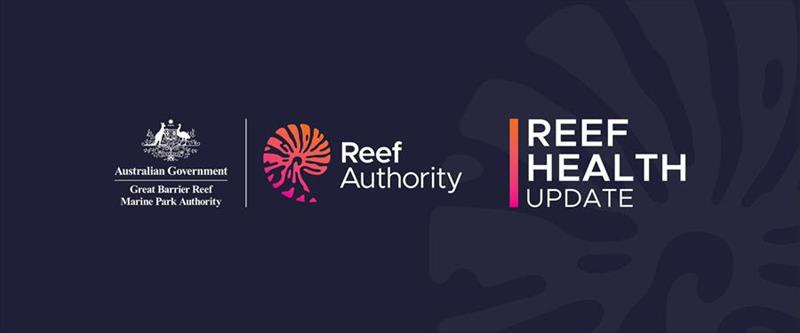
Great Barrier Reef health update - 6 March 2025
by GBRMPA 6 Mar 09:04 UTC
6 March 2025

Reef health update © GBRMPA
We will continue to monitor the cyclone off the Queensland coast and the potential impacts to the Reef. However, at this stage the forecast is predicting that Cyclone Alfred will continue to move south away from the Great Barrier Reef Marine Park.
Cyclone Alfred caused severe wind and wave conditions in the eastern part of the Southern region over the weekend.
Sea surface temperatures remain above average in the Marine Park, however the temperatures are predicted to cool in the coming weeks.
We are continuing to investigate the impacts from the heavy rainfall and flooding event in northern Queensland last month. Satellite imagery has shown extensive flood plumes extending more than 700km along the coastline, spread across inshore, midshelf and outer reefs, seagrass meadows and other marine ecosystems. It's expected that freshwater has caused damage to some exposed ecosystems.
Targeted aerial surveys are scheduled next week in the Far Northern and Northern regions to assess any Reef health impacts that can be seen from the air.
Temperatures
Sea surface temperatures are slightly above average throughout the Marine Park. In the Northern region temperatures are 0.9-degrees above average, while they have decreased in the Central region to 0.3-degrees above average. Sea surface temperatures remain steady in the Far Northern (0.8-degrees) and Southern (0.4-degrees) regions above average.
The forecasts predict that sea surface temperatures will return to average or near-average temperature later this month.
Rainfall
Rainfall is likely to continue to be above average across much of Northern Australia from March to May.
Reef health
Over the past fortnight, 126 Reef Health Impact Surveys (RHIS) were conducted across the Marine Park. From the 14 sites surveyed, 11 had some level of coral bleaching recorded. In the Central and Southern regions, most reefs showed low levels of coral bleaching — 1 to 10% bleaching prevalence. While in the Northern region some reefs showed medium levels of coral bleaching — 11-30% prevalence.
Targeted aerial surveys will be conducted next week in the Far Northern (North of Cooktown to Cape York) and Northern regions (Cairns to Cooktown) to assess any Reef health impacts that are visible from the air resulting from temperature stress and flooding.
As of 14 February, Crown-of-thorns starfish (COTS) outbreaks are most severe in the Southern Region (Swain Reefs) and between Port Douglas and Lizard Island. Isolated and less severe outbreaks are persisting offshore Townsville and the Whitsundays. The Crown-of-thorns Starfish Control Program is continuing to suppress outbreaks and protect coral across hundreds of reefs.
Reef management
As the lead managers of the Reef, we are working closely with our partners to monitor conditions across the Marine Park during these high-risk summer months.
We also use a range of management actions to support and build Reef resilience, including enforcing compliance with our zoning plan and ensuring people enjoy the Reef in a responsible way.
You too can help by reporting any incidents through the Eye on the Reef app, which is available for download on Google Play or Apple Store.
Find more information here